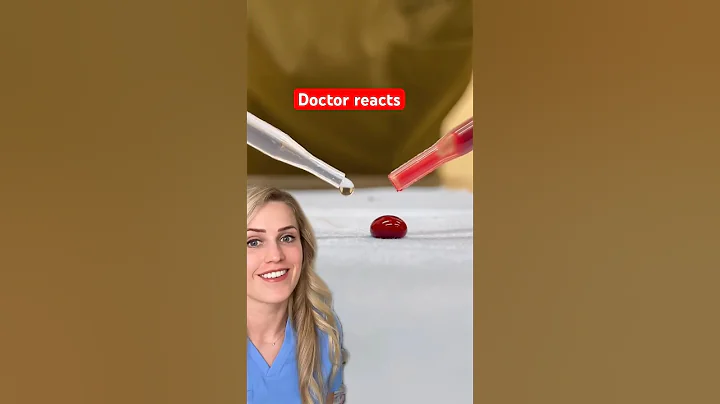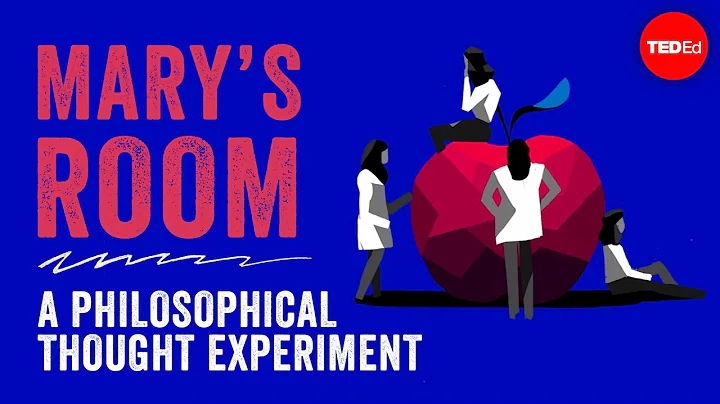today was published in "Crystal Structure of Levansucrase from the Gram-Negative Bacterium BrenneriaProvides Insights into Its Product Size Specificity" on J Agric Food Chem. The author is Professor Mu Wanmeng of , School of Food, Jiangnan University.
fructanase belongs to the glycosidase 68 family (GH 68) and plays a key role in the sucrose utilization process of G+ and G− bacteria. LSs synthesizes fructomeric fructo-oligosaccharides (FOS) and fructomeric polymers formed from sucrose mainly through β-(2,6) fructose bonds. Notably, the LS enzyme isolated from G+ bacteria produced longer fructans as its main product compared with the enzyme from G- bacteria. The mechanism employed by
LSs involves cleaving the α1-β2 glycosidic bond of sucrose and transferring its fructosyl unit to a fructosyl-containing acceptor (transfructosylation, abbreviated as T reaction) or water (hydrolysis, abbreviated as H reaction). In addition to environmental conditions such as cell wall composition and enzyme and substrate concentrations, the spatial organization of the substrate sites within the LS enzyme itself partly determines the ratio between T and H reactions (T/H) and therefore the final product length. To date, only a few 3D structures of LSs have been published; two G+ bacteria including LSs from B.subtilis and Bacillus megaterium, and three G− bacteria including LSs from G.diazotrophicus, E.amylovora and Erwinia lss of tasmaniensis. They both use a common five-bladed β propeller as their catalytic domain, with the main difference being the rings connecting the β chains within and between the blades. A deep negatively charged pocket is located at the base of the β-propeller domain for sucrose binding. As a representative of G+ bacterial LS, the complex of Bs-SacB (E324A) with sucrose has three catalytic residues D86, D247, and E342 around the −1 and +1 subunits, which are designated as nucleophile, transition, respectively. Stabilizers and general acids and bases. Mutation of certain residues around the
sucrose binding site (−1 and +1 subsites) reduces enzyme activity and product synthesis. In addition, mutations of residues far away from the active site can also affect the product spectrum, such as the mutants Y247A, Y247W, N252A, D257A and K373A of Bacillus megateriumLS (Bm-LS). Indeed, in a recent study, it was observed by cocrystallizing complexes of the enzyme (D86A/E342A mutant) with fructomeric FOS (6,6,6,6,6,6,6-ketooctose) To the effect of remote FOS binding sites (OB1 and OB2) in Bs-SacB. Mutation of residues near the +2, +3 and +4 subunits in Bs-SacB only reduced the size of low molecular weight (LMW) fructans, but not the size of HMW fructans. This further supports the relevance of understanding the underlying mechanisms of LS product size specificity for achieving tailored fructan synthesis.
In order to gain a deeper understanding of the product specificity of Brs-LS and the structure-function relationship of LSs, especially regarding the specificity of product size, the authors conducted a more detailed analysis of the product profiles of Brs-LS mutants H327A and A154S. . In addition, the crystal structures of of wild-type Brs-LS, mutants H327A, A154S, and the inactive mutant (D68N) of the complex formed with the donor substrate sucrose were also determined. This is the first time that G−-LSs Perform structural characterization. These structures confirm the important role of residues A154 and H327 in the Brs-LS synthetic polymer and show how their mutations affect the basic interactions of near the site of enzymatic activity. HPLC analysis of the product profiles of
H327A and A154S showed that the A154S mutant was able to produce HMW fructans compared with the wild-type Brs-LS (Figure 1). In this figure, oligosaccharides including polysaccharides as well as fructans are included as products. In fact, the Mw of the polysaccharide produced by the A154S mutant is approximately 106−107Da, which is slightly wider than Brs-LS. Surprisingly, mutant H327A failed to produce any HMW fructans; even when the sucrose concentration was increased to 60%. When the reaction reaches equilibrium, in addition to sucrose, glucose and fructose, a series of FOS with a lower degree of polymerization (DP≤6) will also be generated.The fructooligosaccharide synthesized by the H327A mutant is mainly the trisaccharide 6-ketose, which is the simplest Levan type FOS. Crystal structure of

Brs-LS The crystal structure of
Brs-LS adopts the typical GH68 fold; superposition with a previously constructed homology model (20) shows that they are very similar except for some outer rings. The globular catalytic domain of Brs-LS consists of residues 64−422 and is a 5-bladed β-propeller structure (Fig. 2a, b), which is a typical structural feature of GH68 family enzymes. Each blade is composed of four antiparallel β strands (termed A−D); sometimes the C or D strands are split into two short β strands. The blade forms a funnel with a deep pocket at the base of Brs-LS (Fig. 2c), which contains the three proposed catalytic residues D68, D225 and E309. The inner wall of the active center funnel is mainly lined with the first and second β chains of each leaf, while the outside of the catalytic domain is mainly composed of the third and fourth β chains of each leaf. The edges of the active site funnel are lined by residues from four structural elements: (A) helix α1 (loop 1) in the loop connecting strand 1B-1C, (B) loop 4 connecting strand 2D-3A, (C) Loop 7 connecting strands 4B-4C, and (D) loop 9 connecting strands 5B-5C. The structure of

Brs-LS is more similar to G− bacterial LS than to G+ bacterial LS. The closest structural homologs to Brs-LS are the G− bacteria Ea-LS and Et-LS. In fact, all secondary structural elements stack up almost perfectly, and the lengths of connecting loops and loops are also very similar (Fig. 3a). Compared with Ea-LS, five residues differ in Brs-LS in the loop within the funnel: N116, Y220, A222, F329, and Y371, which replace E94, F198, N200, T307, and F349, respectively (Fig. 3b). Superposition of Brs-LS with Bs-SacB and Bm-LS representing G+ bacterial LSs shows more significant differences, occurring mainly in the loops connecting the β strands within and between each leaf, as well as including the edges of the funnel components (Fig. 3c).
active site (wild type) The
active center (−1 and +1) is located in the center of the β-propeller catalytic domain, forming a deep pocket that accommodates multiple water molecules and glycerol molecules in the −1 subunit. From sequence alignment and activity analysis, three residues located on the first β-strand of blades 1 (D68), 3 (D225), and 4 (E309) were previously identified as the catalytic triad of Brs-LS. The catalytic residues participate in an extensive hydrogen bonding network involving several water molecules, glycerol, and residues R224, R310, Y374, and S375. Residue S375 has a dual conformation and can interact with R310 as well as with the catalytic nucleophile D68. The catalytic acid base E309 also exhibits a dual conformation. Within 5 Å of the catalytic triad, six additional residues (W67, W153, A154, Q307, I325 and H327) are present (Fig. 4a). These residues are conserved in terms of residue type and conformation relative to the LS of other G- bacteria, including Gd-LS and Ea-LS. In contrast, four of these six positions are different in Brs-LS compared to G+ bacteria LSsBs-SacB and Bm-LS: A154 ( serine in G+LS), Q307 (glutamic acid) , I325 (aspartic acid) and H327 (arginine) (Fig. 4b). The active site of

(mutant D68N is complexed with sucrose). The D68N mutant of
Brs-LS is inactive towards sucrose. 2Fo-Fc and Fo-Fc electron density maps (1.35 Å resolution) from crystals soaked with 50 mM sucrose indicate the presence of sucrose in the active center, although the density of the fructosyl ring is less clear; therefore, the sucrose occupancy was set to 0.70 for best refining results. The Polder type omit plot (Fig. 5a) confirmed the presence of the substrate. Overlay of the Brs-LS sucrose complex with BsSacB (PDB: 1PT2) shows almost identical binding directions. The fructose and glucose moieties of the substrate are tightly bound to the enzyme through several direct hydrogen bonds. In detail, the fructosyl O1/ hydrogen bonds with Oδ1 in one of the two D68N side chain conformations, while the O3 and O4 hydroxyl groups are stabilized by hydrogen bonds of D225 Oδ1 and Oδ2. An alternative side chain conformation of the mutated catalytic nucleophile (D68N) points away from sucrose toward A154 and R310, but no hydrogen bonding interaction occurs.Notably, the glycosidic oxygen as well as glucose O2 and fructose O/ interact with E309 via hydrogen bonds, placing this catalytic acid/base in the appropriate orientation to donate a proton to the glycosidic bond . The orientation of the E309 side chain is further stabilized by hydrogen bonding interactions with R224 and Y374, both of which are conserved residues. No other significant structural changes were observed in the D68N mutant. In addition to the catalytic residues of

, other residues including W67, H119, R224, Q307, H327 and S375 as well as the main chain nitrogen atom of A154 also interact with sucrose (Fig. 5b). Among these residues, interactions involving W67, R224, D225, and S375 are structurally conserved with the Bs-SacB sucrose complex; these residues are located in the highly conserved motifs -VWD-, -RDP-, and TYSH, respectively. Two other residues, Q307 and H327, are different from the residues found in the G+ bacterial LS (e.g. E340 and R360 of Bs-SacB), and similar to the situation in BsSacB, they are still related to the O2 and O3 groups of the glucose moiety of sucrose. Groups provide hydrogen bonding interactions.
mutant H327A
superimposes the structures of wild-type Brs-LS and mutant H327A, and the RMSD value is 0.078 Å, indicating a high similarity between the two structures. The presence of the H327 histidine loop contributes to the formation of this side of the funnel (Fig. 6a), thereby defining the substrate binding space and potentially affecting fructose transfer efficiency. Notably, while in the wild-type structure, H327 is “sandwiched” between Y374 and the inward conformation of F329, the H327A mutant lacks the heterocyclic histidine ring and π−π stacking interactions are no longer possible. As a result, in mutant H327A, only the outward conformation of F329 was observed (Fig. 6b). Taken together, the lack of histidine loops and the preferred outward-facing conformation of phenylalanine in results in a wider space near the +1 subsite (Figure 6c). Superposition of the

mutant A154S
wild-type Brs-LS and A154S mutant structures with an RMSD of 0.105 Å. Notably, in the mutant structure, two different conformations of S154 were observed (Fig. 7). One of the two Ser side chain conformations hydrogen bonds with the transition state stabilizing residue D225 (and with water W149); the other S154 side chain conformation participates in hydrogen bonding with D68 OD2, thereby slightly repositioning its side chain (0.5 ÅOD2). Notably, unlike the D68N sucrose complex, the D68 side chain has a single conformation facing the −1 subunit . Finally, the main chain nitrogen atom of A154S forms a hydrogen bond with the O3 atom of glycerol; in the wild-type and H327A structures, the water molecule is at the same position, while in the D68N sucrose complex, the hydrogen bond is with the fructosyl O4/ .

Organized by: Sun Xiao
Article information:
DOI: 10.1021/acs.jafc.2c01225
Article link: https://doi.org/10.1021/acs.jafc.2c01225
















![PHILOSOPHY - Epistemology: Three Responses to Skepticism [HD] - DayDayNews](https://i.ytimg.com/vi/xehTcQeqDWs/hq720.jpg?sqp=-oaymwEcCNAFEJQDSFXyq4qpAw4IARUAAIhCGAFwAcABBg==&rs=AOn4CLBHsFkNT3N-KlJEqb1cS0VegvUQEw)
![PHILOSOPHY - Epistemology: The Problem of Skepticism [HD] - DayDayNews](https://i.ytimg.com/vi/PqjdRAERWLc/hq720.jpg?sqp=-oaymwEcCNAFEJQDSFXyq4qpAw4IARUAAIhCGAFwAcABBg==&rs=AOn4CLA1bVrC7oMF6w8UxSGswRTCVkI7mg)



